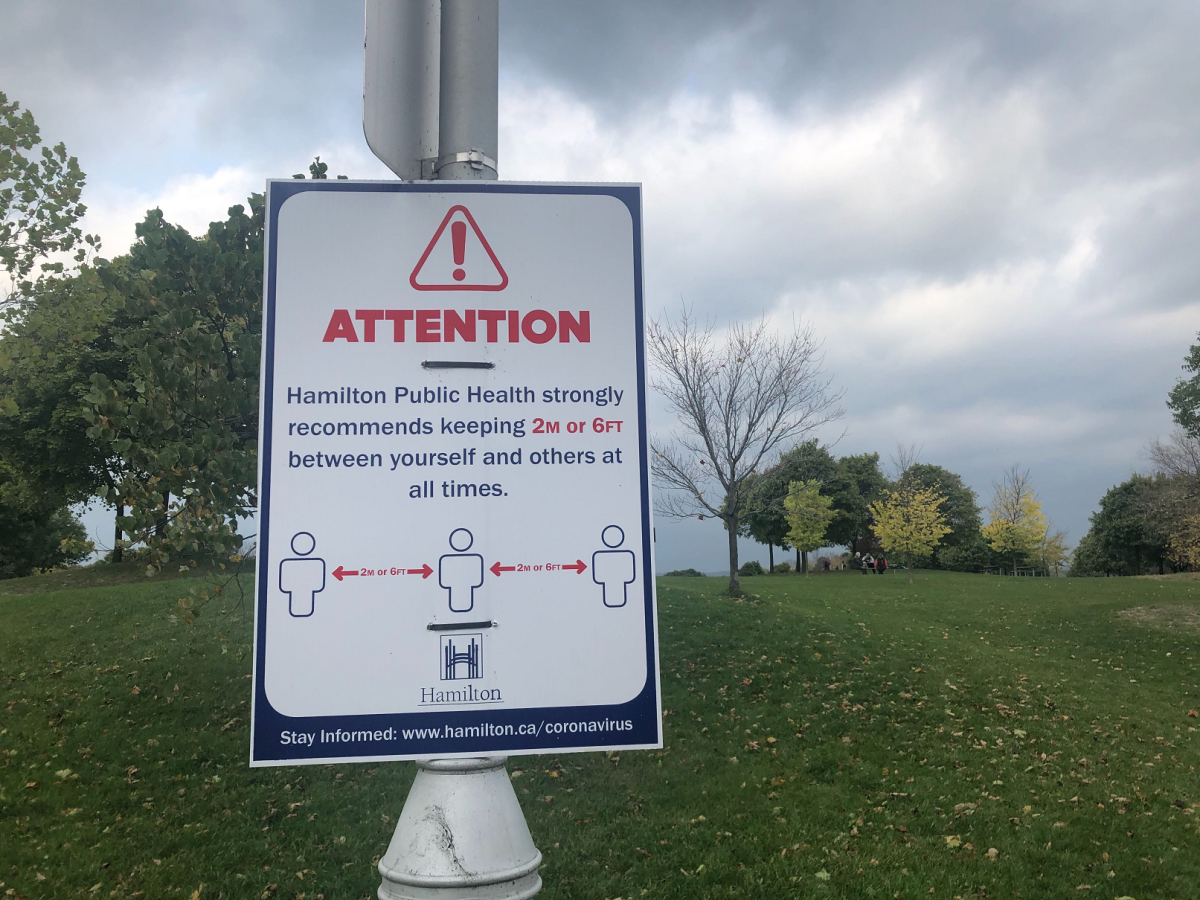Hamilton’s low-income residents and racialized communities are more vulnerable to COVID-19, according to a new report from public health.

The analysis, which was presented to the board of health during Monday’s meeting, consists of data collected from those who responded to questions about social determinants of health like race, sex, income, career and housing.
Between March 1 and Aug. 31, there were 992 confirmed cases of COVID-19 in Hamilton, and 630 of those who tested positive responded to at least one social determinant question.
The report said 50.9 per cent of the city’s cases were among people of colour, despite people of colour only representing 19 per cent of the population.
Meanwhile, 49 per cent of local cases of the coronavirus were among white residents, who make up 81 per cent of Hamilton’s population.
Epidemiologist Mackenzie Slifierz said most cases — 84 per cent — were from households of five people or fewer.

Get weekly health news
“We also found that our average household size was larger for visible minority cases compared to cases who identified as white,” said Slifierz. “That has been out in the literature and hypothesized to perhaps be one of the components around why there might be some disproportionate activity of COVID in our visible minority population.”
Residents of low-income households accounted for 27.1 per cent of cases, despite making up only 18.9 per cent of Hamilton’s population.
According to the report, 43.1 per cent of people of colour in Hamilton live in low-income households, while 14.6 of white residents fall into that same category.
There were more cases among women than men, and the report suggests that’s due in part to how many women work in health care.
One in five cases were among health-care workers.
However, COVID-19 has more serious impacts on men, according to the findings — with more men being hospitalized or dying from the illness.
Slifierz said it’s clear that the pandemic has highlighted “pre-existing inequities” among marginalized communities.
He cautioned that there are “limitations” with the data due to low response from some groups and the fact that it’s based only on the cases that were identified through testing, which wasn’t widespread in the early days of the pandemic.
Despite that, Slifierz says it lines up pretty well with what other municipalities have reported.
“These findings are not unique to Hamilton. They do align with other communities … Toronto, Ottawa and Waterloo, for example, and they also tend to align with what we’re seeing published in the research as well.”
Ward 1 Coun. Maureen Wilson asked the city’s chief medical officer of health whether the eventual roll-out of a COVID-19 vaccine will prioritize those who are most at risk, as identified in the report.
While it remains to be seen if public health will be responsible for actually administering the vaccine, Dr. Elizabeth Richardson said they will be looking at ensuring vulnerable residents have access.
“We would definitely be including those sorts of factors in the designs of the plan as we go forward, about how can we get out to those that are at highest risk — that means both by social determinants, but also from a health status perspective — and then how we could ensure that they’re able to both access the vaccine and any other supports they need.”









Comments